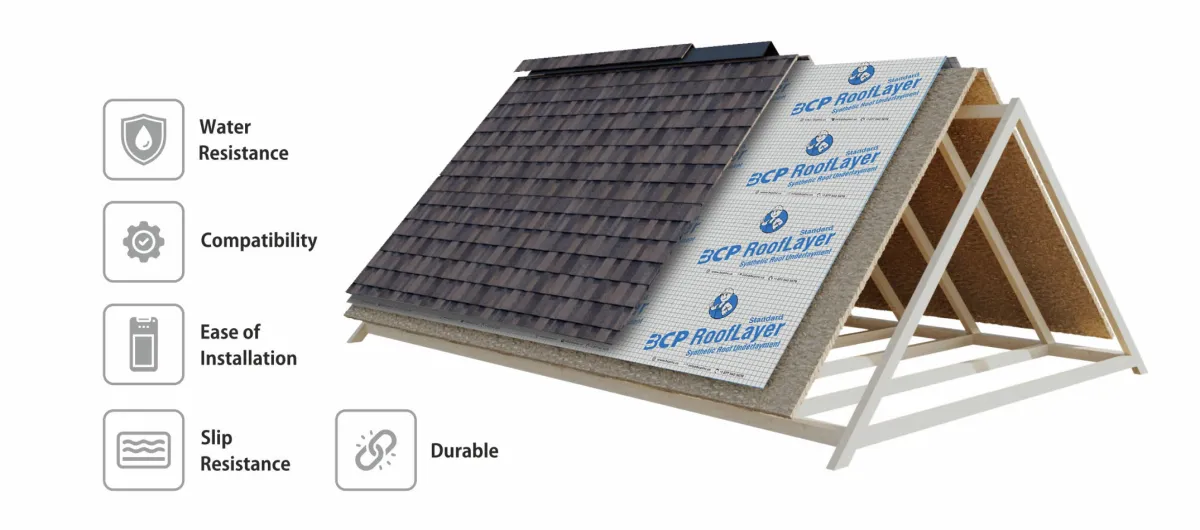
Choosing the Best Roof Underlayment Materials
When it comes to safeguarding your home, the right roof underlayment is the unsung hero that stands between your shingles and Mother Nature. In this guide, we’ll walk through every option—from traditional asphalt felt to high-tech synthetics and rubberized asphalt—so you can pick the perfect barrier for lasting performance.
Why Underlayment Matters
Roof underlayment serves as your secondary waterproof barrier, sitting directly on the roof deck beneath shingles or metal panels. It:
Prevents leaks if your outer roofing material fails
Buffers impacts from wind-driven debris
Reduces wind uplift by adhering tightly to the deck
Improves energy efficiency by adding an insulating layer
Even the best shingles can’t do their job without a quality underlayment protecting the deck below.
Common Underlayment Types
Asphalt-Saturated Felt
Pros: Affordable, widely available, easy to install
Cons: Prone to tearing and moisture absorption; lifespan 10–20 years
Best for: Budget-minded projects in mild climates
Synthetic Underlayment
Pros: Lightweight, UV-resistant, tear-proof; lasts 20–40+ years
Cons: Higher upfront cost
Best for: High-humidity or strong-sun regions; long-term performance
Rubberized Asphalt
Pros: Self-adhering, creates a watertight seal, excels at ice-dam zones; lifespan 30–50+ years
Cons: Most expensive
Best for: Critical areas (eaves, valleys) and extreme weather locales
Key Selection Factors
Climate
Heavy rain or ice dams → Synthetic or Rubberized
Mild, dry regions → Asphalt Felt or Synthetic
Roofing Material
Shingles, tiles, or metal each have compatible underlayments; check manufacturer guidelines
Metal roofs pair well with synthetic to prevent tears
Budget vs. Longevity
Asphalt Felt: $0.15–$0.30/sq ft
Synthetic: $0.20–$0.50/sq ft
Rubberized: $0.50–$1.00/sq ft
Installation Complexity
Felt & synthetic: straightforward roll-out
Rubberized: meticulous prep and adhesion
Durability & Lifespan
Asphalt Felt: 10–20 years; low tear and UV resistance
Synthetic: 20–40+ years; high tear and UV resistance
Rubberized Asphalt: 30–50+ years; best tear resistance; moderate UV stability
Water Resistance & Weather Protection
Felt: Basic barrier but can saturate under prolonged exposure
Synthetic: Non-absorbent and tear-proof, excels at keeping water out
Rubberized: Seamless, self-adhering seal—ideal for ice dams and wind-driven rain

Installation Best Practices
Clean Deck: Remove debris for perfect adhesion
Correct Overlap: Felt/Synthetic overlap 2″; Rubberized overlap 3″
Secure Fasteners: Use cap nails or plastic caps on synthetics
Detail Work: Flash all valleys, eaves, and penetrations with rubberized asphalt
Cost Analysis & Budgeting
Felt: Lowest cost but may need replacement sooner
Synthetic: Mid-range cost with long-term savings
Rubberized: Premium investment for maximum protection
Common Mistakes to Avoid
Choosing Solely on Price: Cheap felt can mean costly leaks
Ignoring Climate Needs: Select underlayment built for your weather conditions
Improper Installation: Incorrect overlaps or fasteners compromise performance
Skipping Warranty Guidelines: Roofing warranties often stipulate underlayment type
Conclusion
Budget Projects in Dry Climates: Asphalt Felt (plan for future replacements)
Most Homeowners & Contractors: Synthetic Underlayment for balanced cost and longevity
High-Risk or Critical Zones: Rubberized Asphalt Underlayment for unbeatable moisture defense
A well-chosen underlayment enhances protection, cuts maintenance, and adds years of service life. Pick the right one, install it with care, and enjoy decades of peace of mind—your roof’s hidden champion is worth every penny.